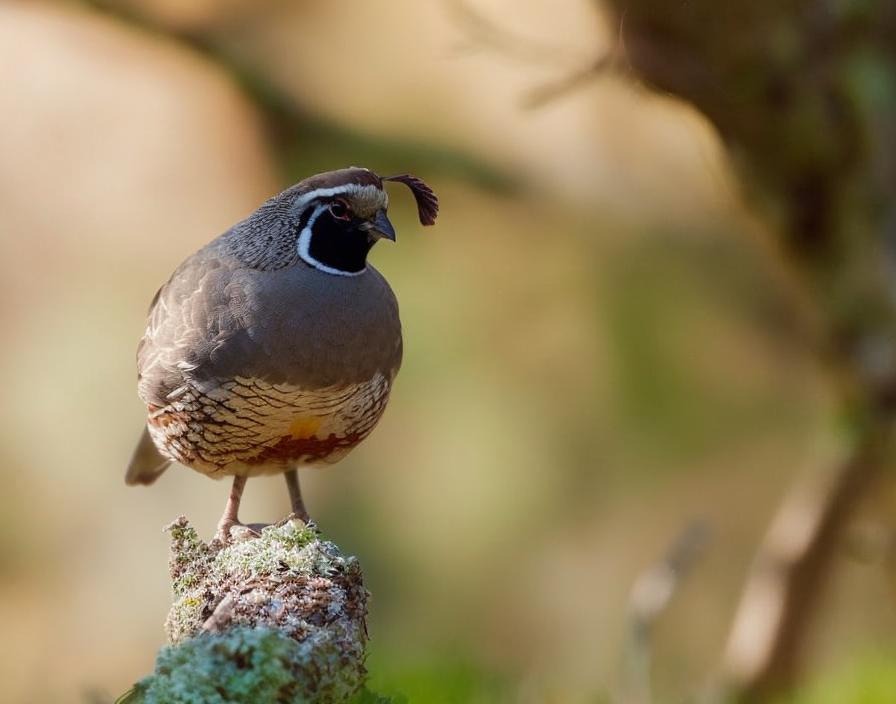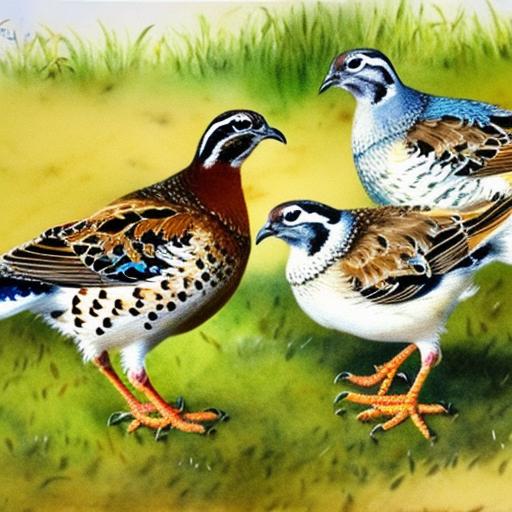Quail breeding is a popular and rewarding hobby for many people around the world. Quails are small, ground-dwelling birds that are known for their delicious eggs and meat. They are relatively easy to care for and can be bred in a small space, making them an ideal choice for hobbyists and small-scale farmers. Quail breeding can be a profitable venture as well, as there is a high demand for quail eggs and meat in the market. Whether you are interested in quail breeding for personal consumption or for commercial purposes, understanding the different quail breeds, breeding techniques, and challenges involved is essential for success.
Quail breeding can be a fascinating and fulfilling experience, as these birds are known for their unique behaviors and social interactions. By learning about the different quail breeds, their specific needs, and the best breeding techniques, you can ensure the health and productivity of your quail flock. In this article, we will explore the world of quail breeding, including the different quail breeds, factors to consider when breeding them, breeding techniques, challenges, benefits, and tips for successful quail breeding.
Key Takeaways
- Quail breeding is a rewarding and profitable venture that requires careful consideration and understanding of different quail breeds.
- There are various quail breeds with unique characteristics and requirements, such as the Coturnix, Bobwhite, and Button quail.
- Factors to consider when breeding different quail breeds include climate, space, diet, and breeding goals.
- Breeding techniques for different quail breeds may include natural mating, artificial insemination, and brooding methods.
- Challenges of breeding different quail breeds include disease management, genetic diversity, and maintaining optimal breeding conditions.
Understanding the Different Quail Breeds
There are several different quail breeds that are commonly bred for their eggs, meat, or ornamental purposes. Some of the most popular quail breeds include the Coturnix quail (also known as Japanese quail), Bobwhite quail, California quail, Gambel’s quail, and Button quail. Each of these breeds has its own unique characteristics, including size, coloration, egg production, and temperament.
Coturnix quail are one of the most popular breeds for commercial quail farming due to their high egg production and fast growth rate. They come in a variety of colors, including brown, white, and tuxedo (a mix of brown and white). Bobwhite quail are native to North America and are known for their distinctive white and black plumage. They are often bred for both meat and hunting purposes. California quail are native to the western United States and have a striking appearance with their gray and brown plumage and distinctive topknot. Gambel’s quail are found in the southwestern United States and northern Mexico, known for their intricate feather patterns and vibrant plumage. Button quail, also known as Chinese painted quail, are popular for their small size and colorful plumage, making them a favorite among aviculture enthusiasts.
Understanding the different quail breeds is essential for successful breeding, as it allows breeders to select the most suitable breed based on their specific goals and preferences. Whether you are interested in high egg production, meat quality, or ornamental value, there is a quail breed that will meet your needs.
Factors to Consider When Breeding Different Quail Breeds
When breeding different quail breeds, there are several important factors to consider to ensure the health and productivity of the flock. These factors include housing requirements, diet and nutrition, breeding age and ratio, environmental conditions, and disease prevention.
Housing requirements for quails vary depending on the breed and the purpose of breeding. For example, Coturnix quail require a minimum of 1 square foot of space per bird in a cage or aviary setting, while Bobwhite quail may require larger outdoor enclosures with access to natural vegetation. Providing adequate space, nesting areas, and protection from predators is essential for the well-being of the quails.
Diet and nutrition play a crucial role in the breeding success of quails. A balanced diet that includes high-quality commercial feed, fresh water, and occasional treats such as mealworms or greens is essential for maintaining optimal health and reproductive performance. Breeding age and ratio are also important considerations when breeding different quail breeds. Quails typically reach sexual maturity at around 6-8 weeks of age, but breeders should wait until they are at least 10-12 weeks old before allowing them to breed to ensure they are physically mature enough to handle the process. Additionally, maintaining the proper ratio of males to females is important to prevent aggression and ensure successful mating.
Environmental conditions such as temperature, humidity, and lighting can also impact the breeding success of quails. Providing a comfortable and stress-free environment is essential for encouraging natural mating behavior and egg production. Lastly, disease prevention is a critical factor in quail breeding. Regular health checks, proper sanitation practices, and vaccination programs can help prevent common diseases and ensure the overall well-being of the flock.
Breeding Techniques for Different Quail Breeds
Breeding techniques for different quail breeds can vary depending on the specific goals of the breeder, whether it’s for egg production, meat quality, or ornamental purposes. Some common breeding techniques include natural mating, artificial insemination, brooding and rearing chicks, and selective breeding.
Natural mating is the most common method of breeding quails, where males and females are allowed to interact freely in a suitable environment. Providing the right conditions such as proper lighting, temperature, and nesting areas can encourage natural mating behavior. Breeders should monitor the mating activity and ensure that there is a proper ratio of males to females to prevent overbreeding or aggression.
Artificial insemination is another breeding technique that is commonly used in commercial quail farming to control breeding outcomes and improve genetic traits. This method involves collecting semen from male quails and inseminating females using specialized equipment. Artificial insemination allows breeders to selectively breed for specific traits such as egg production, meat quality, or coloration.
Brooding and rearing chicks is an essential part of quail breeding, especially for those interested in maintaining a sustainable flock. Providing a suitable brooding area with proper heating, bedding, and nutrition is essential for the health and development of the chicks. Breeders should closely monitor the chicks’ growth and provide appropriate care to ensure their survival.
Selective breeding is a long-term breeding technique that involves choosing birds with desirable traits such as high egg production, fast growth rate, or unique coloration to be used as breeding stock for future generations. By carefully selecting and pairing birds with specific traits, breeders can gradually improve the overall quality of their flock over time.
Challenges of Breeding Different Quail Breeds
Breeding different quail breeds comes with its own set of challenges that breeders need to be aware of in order to ensure success. Some common challenges include maintaining optimal breeding conditions, preventing aggression and cannibalism, managing brooding and chick rearing, disease prevention, and genetic diversity.
Maintaining optimal breeding conditions such as proper lighting, temperature, humidity, and nesting areas can be challenging, especially in fluctuating environmental conditions. Breeders need to carefully monitor these factors and make adjustments as needed to encourage natural mating behavior and egg production.
Preventing aggression and cannibalism among quails is another challenge that breeders may encounter, especially when housing multiple birds together. Providing adequate space, enrichment activities, and proper nutrition can help reduce aggressive behavior and prevent injuries within the flock.
Managing brooding and chick rearing can be challenging for breeders, especially when dealing with large numbers of chicks. Providing a suitable brooding area with proper heating, ventilation, and nutrition is essential for the health and development of the chicks. Breeders should also be prepared to provide additional care and attention to ensure the survival of the chicks during this critical stage.
Disease prevention is a constant challenge in quail breeding due to the risk of common diseases such as coccidiosis, respiratory infections, and parasitic infestations. Implementing strict biosecurity measures, regular health checks, proper sanitation practices, and vaccination programs can help prevent disease outbreaks within the flock.
Maintaining genetic diversity within the flock is also an important challenge in quail breeding to prevent inbreeding depression and maintain overall flock health. Breeders should carefully manage their breeding programs to ensure that they are maintaining a diverse gene pool by introducing new bloodlines or outcrossing with other flocks when necessary.
Benefits of Breeding Different Quail Breeds

Despite the challenges involved in breeding different quail breeds, there are numerous benefits that make it a rewarding endeavor for hobbyists and small-scale farmers alike. Some of the key benefits include high egg production, fast growth rate, delicious meat quality, ornamental value, low space requirements, and potential for profit.
Quails are known for their high egg production compared to other poultry species such as chickens. Coturnix quails can lay up to 300 eggs per year under optimal conditions, making them a valuable source of fresh eggs for personal consumption or commercial sale.
Quails also have a fast growth rate compared to other poultry species, reaching maturity in just 6-8 weeks. This makes them an ideal choice for those interested in producing meat for personal consumption or sale.
The delicious meat quality of quails is another benefit that makes them popular among consumers. Quail meat is lean, tender, and flavorful, making it a sought-after delicacy in many cuisines around the world.
Quails also have ornamental value due to their unique coloration and social behaviors. Many people enjoy keeping quails as pets or ornamental birds in aviaries or backyard settings.
Quails require minimal space compared to other poultry species, making them an ideal choice for those with limited land or urban settings. They can be easily housed in small cages or aviaries without compromising their health or productivity.
Lastly, there is potential for profit in quail breeding due to the high demand for quail eggs and meat in the market. Whether it’s selling fresh eggs to local markets or restaurants or supplying dressed quails to specialty food stores or direct consumers, there are various opportunities for generating income from quail breeding.
Conclusion and Tips for Successful Quail Breeding
In conclusion, quail breeding is a fascinating and rewarding endeavor that offers numerous benefits for hobbyists and small-scale farmers alike. Understanding the different quail breeds, factors to consider when breeding them, breeding techniques, challenges involved, and benefits is essential for successful quail breeding.
Some tips for successful quail breeding include providing adequate housing with proper nesting areas and protection from predators; ensuring a balanced diet with high-quality commercial feed and fresh water; waiting until quails are at least 10-12 weeks old before allowing them to breed; maintaining optimal environmental conditions such as temperature, humidity, and lighting; implementing strict biosecurity measures to prevent disease outbreaks; managing genetic diversity within the flock; monitoring mating activity to prevent aggression; providing suitable brooding areas with proper heating and nutrition; implementing selective breeding programs to improve genetic traits; and exploring potential markets for selling quail eggs or meat.
By following these tips and continuously learning about best practices in quail breeding through resources such as books, online forums, workshops, and networking with other breeders, you can ensure the health and productivity of your quail flock while enjoying the many benefits that come with this rewarding hobby or business venture. Whether you are interested in high egg production, delicious meat quality, ornamental value or potential profit from selling quail products in the market – there is something for everyone in the world of quail breeding!
If you’re interested in breeding different breeds of quail, you may also want to explore the mating season for turkeys. Understanding the mating behaviors and seasons of various poultry species can provide valuable insights into successful breeding practices. Check out this informative article on mating season for turkeys to gain a deeper understanding of poultry breeding.
FAQs
Can different breeds of quail breed with each other?
Yes, different breeds of quail can breed with each other. However, it is important to note that breeding different breeds of quail can result in hybrid offspring with unpredictable traits.
What are the potential challenges of breeding different breeds of quail?
Breeding different breeds of quail can pose challenges such as potential genetic issues in the offspring, difficulty in maintaining breed standards, and potential health issues in the hybrid offspring.
Are there any benefits to breeding different breeds of quail?
Breeding different breeds of quail can result in hybrid vigor, which can lead to offspring with improved traits such as disease resistance, growth rate, and overall health. Additionally, breeding different breeds can also lead to the development of new and unique quail varieties.
What should be considered before breeding different breeds of quail?
Before breeding different breeds of quail, it is important to research and understand the characteristics and traits of each breed, as well as the potential outcomes of crossbreeding. It is also important to consider the long-term goals and objectives of the breeding program.
Meet Walter, the feathered-friend fanatic of Florida! Nestled in the sunshine state, Walter struts through life with his feathered companions, clucking his way to happiness. With a coop that’s fancier than a five-star hotel, he’s the Don Juan of the chicken world. When he’s not teaching his hens to do the cha-cha, you’ll find him in a heated debate with his prized rooster, Sir Clucks-a-Lot. Walter’s poultry passion is no yolk; he’s the sunny-side-up guy you never knew you needed in your flock of friends!







